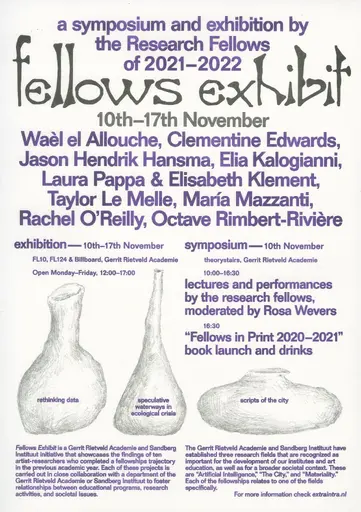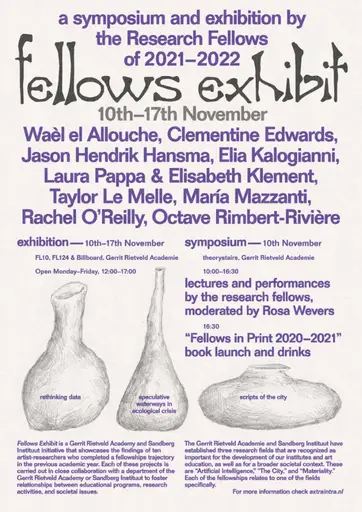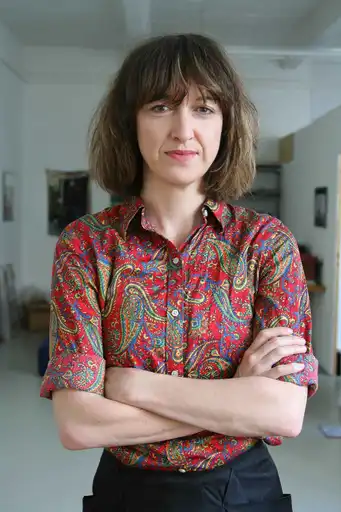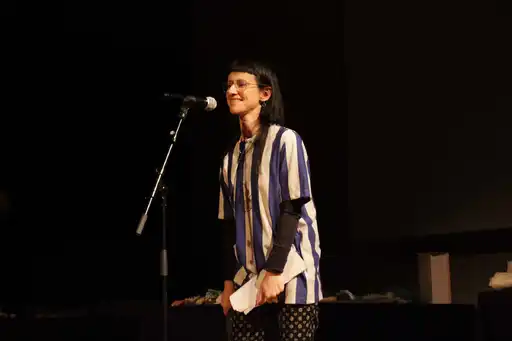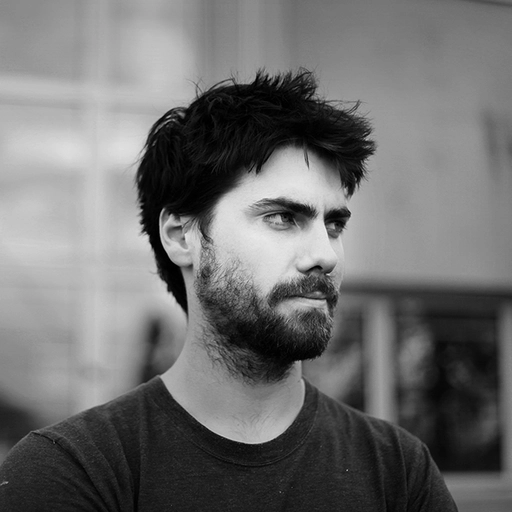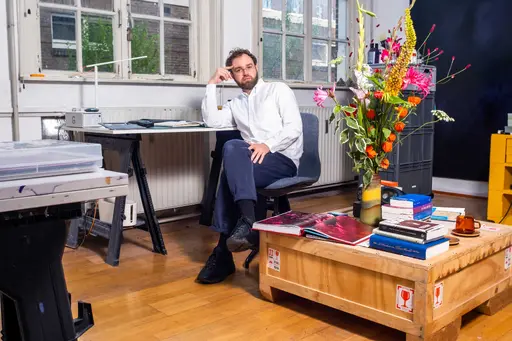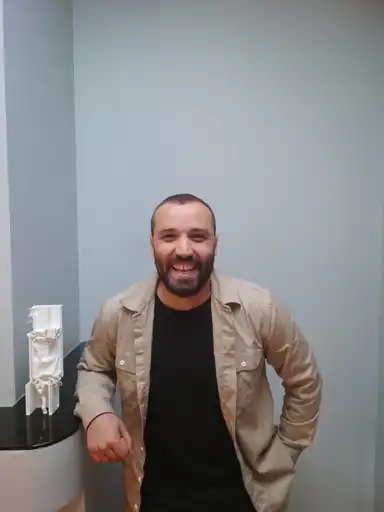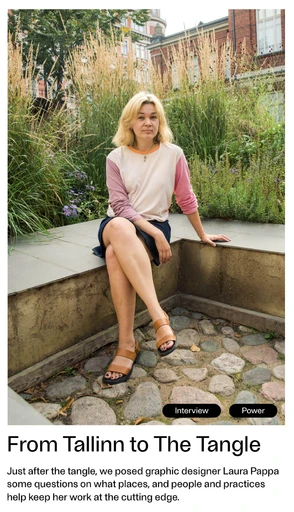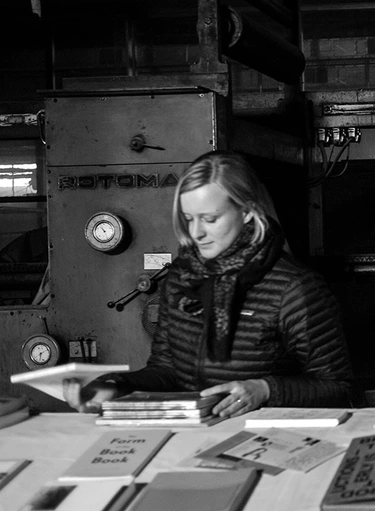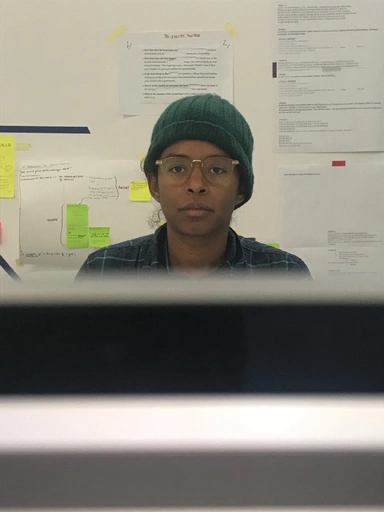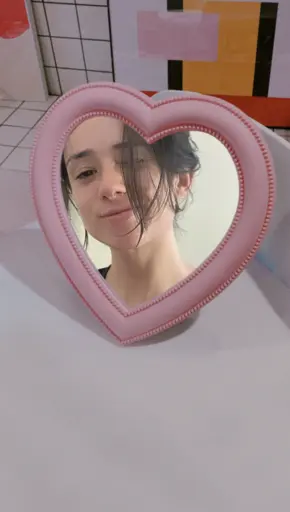event
10
Nov '22
Fellows Exhibit
Fellows Exhibit
Fellows Exhibit is a Rietveld Sandberg initiative that showcases the findings of nine artist-researchers who completed a fellowships trajectory in the past academic year. Each of these projects is carried out in close collaboration with a department of the Sandberg Instituut or the Rietveld Academie to foster relationships between educational programs, research activities, and societal issues.
Rietveld Academie and Sandberg Instituut have established three research fields that are recognized as important for the development of our institutes and art education, as well as for a broader societal context. These are Artificial Intelligence, The City, and Materiality. Each of the fellowships relates to one of the fields specifically. Springing from these research themes expect reflections on speculative waterways in ecological crisis, rethinking data and scripts of the city.
Fellows Exhibit is a Rietveld Sandberg initiative that showcases the findings of nine artist-researchers who completed a fellowships trajectory in the past academic year.
Symposium Schedule 10 November 2022
10.00 Opening
10.20 María Mazzanti
María Mazzanti is an architect, editor and researcher based between Amsterdam and Bogota, particularly interested in critical spatial practices, publishing and artistic research.
Within the fellowship, Mazzanti has been furthering the ongoing research project Forecasting, Otherwise, which delves into the failures of architecture, boundary-making practices, the urbanisation of natural resources and frameworks of predictability by analysing one case study: The Seasonal flash floods in Barranquilla, Colombia.
11.00 Rachel O'Reilly (online)
Rachel O'Reilly is a settler Australian artist/writer/curator whose work engages questions of subjectivity, governance and planetarity, paying particular attention to language and the moving image. During the fellowship, O'Reilly has focused on a recent turn towards the oceanic in art in ways that extend critical imagination offshore. This presentation draws on new research conducted in the Sandburg fellowship period that connects O'Reilly's research on energy developments in North Australia to the East Coast's littoral zones. Australian governance experiments contributed major weapons of private property innovation to global capital's arsenal. However, the ongoing exchange between land and sea imaginaries at the level of law, policy and history is often downplayed in the so-called oceanic turn. Thinking through the difference between possible and probable in futures now past but still here, the talk reflects on a few moments of artistic and industrial labour foment in struggles for conservation and resistance to fossil fuel developments.
BREAK
11.50 Clementine Edwards
Clementine Edwards is an artist, editor and writer from Naarm/Melbourne based in Rotterdam. Her work is guided by the ongoing research line material kinship, which thinks kin beyond bloodlines and material beyond extraction.
Within the fellowship, Edwards has explored aesthetic strategies that map the connection between colonialism and the climate crisis. The project, which centres on the idea of the miniature, navigates artistic practices in which jewellery becomes an intimate, embodied and pertinent framework that is inextricably tied to femme, complex and anti-heroic work.
12.30 Wael el Allouche
Artist and Designer Wael el Allouche is interested in how abstractions, such as Data and Algorithms, shape reality and vice versa. During the fellowship, he focused on the physical aspects and traceability of navigation, intending to see how algorithms, like the shortest path algorithm used in navigation systems, affect human travel behaviour. While employing the Situationists' concept of the 'Derive', the project crafts a method that emphasises the bodily aspects of navigation through AI. To connect the abstract and the physical and see how they influence each other, he uses the resolution of phone navigation to make real-time maps of micro gestures in different spontaneous scenarios.
BREAK
13.40 Taylor le Melle
Taylor Le Melle is a writer who also organises exhibitions and produces objects. Within the fellowship, they have been writing a book-length text of epic dramatic verse to also be performed to camera. A community of archetypal characters experience profound shifts in their own consciousness as their relationship to property necessarily changes with the sudden advent of new legal policies regarding rights to ownership. Many of the archetypal characters who propel the narrative forward are makers – designers, growers – in some way shape or form. And thus to articulate this narrative, Le Melle’s research process has taken an embodied approach wherein the writer is engaged in the production of two design objects – a boat and a bathtub – as well as training in herbal medicine, horticulture and agricultural technologies.
14.20 Jason Hendrik Hansma
Jason Hendrik Hansma is an artist whose work explores the in-between, the liminal, and the nearly articulate. Within the fellowship, Hansma has been working on the idea of translation as an art practice, along with Benjamin's concept of 'over-naming' that occurs as the very basis of language. Hansma has been thinking of tools that counteract 'over-naming', especially through climate change which stands to undo our linguistic and material boundaries. These ideas have informed films, exhibitions, and a general studio attitude over the last few months.
BREAK
15.10 Octave Rimbert-Rivière
Octave Rimbert-Rivière is a sculptor who looks for tension between craft and learning new technologies resulting in unknown outputs. Within the fellowship, he has been exploring the perversion of design and craft; The primary and necessary things in life are designed and built with little attention to imagination and non-normative taste. While asking what an experimental attitude of 'directed malfunction' could look like, Rimbert-Rivière's way to reckon with the 'sameness problem' problem in design is to use the same technologies used for streamlined production and 'glitch' them to arrive at the unexpected and the unique.
15.50 Laura Pappa & Elisabeth Klement
Laura Pappa and Elisabeth Klement are both designers and educators based in Amsterdam. Their collaborative fellowship project, 'Public Display,' examines the tools and platforms cities offer to disseminate ideas. It explores how graphic design in the city functions primarily in service of advertisements or direction-giving.
While drawing on fieldwork, archival material and interviews, the project is mapping public spaces, community art venues, vitrines, public poster walls and other designated areas and surfaces where designers and citizens at large could share their ideas and works.
BOOKLAUNCH OF Fellows in print 2020/21 & DRINKS
10.20 María Mazzanti
María Mazzanti is an architect, editor and researcher based between Amsterdam and Bogota, particularly interested in critical spatial practices, publishing and artistic research.
Within the fellowship, Mazzanti has been furthering the ongoing research project Forecasting, Otherwise, which delves into the failures of architecture, boundary-making practices, the urbanisation of natural resources and frameworks of predictability by analysing one case study: The Seasonal flash floods in Barranquilla, Colombia.
11.00 Rachel O'Reilly (online)
Rachel O'Reilly is a settler Australian artist/writer/curator whose work engages questions of subjectivity, governance and planetarity, paying particular attention to language and the moving image. During the fellowship, O'Reilly has focused on a recent turn towards the oceanic in art in ways that extend critical imagination offshore. This presentation draws on new research conducted in the Sandburg fellowship period that connects O'Reilly's research on energy developments in North Australia to the East Coast's littoral zones. Australian governance experiments contributed major weapons of private property innovation to global capital's arsenal. However, the ongoing exchange between land and sea imaginaries at the level of law, policy and history is often downplayed in the so-called oceanic turn. Thinking through the difference between possible and probable in futures now past but still here, the talk reflects on a few moments of artistic and industrial labour foment in struggles for conservation and resistance to fossil fuel developments.
BREAK
11.50 Clementine Edwards
Clementine Edwards is an artist, editor and writer from Naarm/Melbourne based in Rotterdam. Her work is guided by the ongoing research line material kinship, which thinks kin beyond bloodlines and material beyond extraction.
Within the fellowship, Edwards has explored aesthetic strategies that map the connection between colonialism and the climate crisis. The project, which centres on the idea of the miniature, navigates artistic practices in which jewellery becomes an intimate, embodied and pertinent framework that is inextricably tied to femme, complex and anti-heroic work.
12.30 Wael el Allouche
Artist and Designer Wael el Allouche is interested in how abstractions, such as Data and Algorithms, shape reality and vice versa. During the fellowship, he focused on the physical aspects and traceability of navigation, intending to see how algorithms, like the shortest path algorithm used in navigation systems, affect human travel behaviour. While employing the Situationists' concept of the 'Derive', the project crafts a method that emphasises the bodily aspects of navigation through AI. To connect the abstract and the physical and see how they influence each other, he uses the resolution of phone navigation to make real-time maps of micro gestures in different spontaneous scenarios.
BREAK
13.40 Taylor le Melle
Taylor Le Melle is a writer who also organises exhibitions and produces objects. Within the fellowship, they have been writing a book-length text of epic dramatic verse to also be performed to camera. A community of archetypal characters experience profound shifts in their own consciousness as their relationship to property necessarily changes with the sudden advent of new legal policies regarding rights to ownership. Many of the archetypal characters who propel the narrative forward are makers – designers, growers – in some way shape or form. And thus to articulate this narrative, Le Melle’s research process has taken an embodied approach wherein the writer is engaged in the production of two design objects – a boat and a bathtub – as well as training in herbal medicine, horticulture and agricultural technologies.
14.20 Jason Hendrik Hansma
Jason Hendrik Hansma is an artist whose work explores the in-between, the liminal, and the nearly articulate. Within the fellowship, Hansma has been working on the idea of translation as an art practice, along with Benjamin's concept of 'over-naming' that occurs as the very basis of language. Hansma has been thinking of tools that counteract 'over-naming', especially through climate change which stands to undo our linguistic and material boundaries. These ideas have informed films, exhibitions, and a general studio attitude over the last few months.
BREAK
15.10 Octave Rimbert-Rivière
Octave Rimbert-Rivière is a sculptor who looks for tension between craft and learning new technologies resulting in unknown outputs. Within the fellowship, he has been exploring the perversion of design and craft; The primary and necessary things in life are designed and built with little attention to imagination and non-normative taste. While asking what an experimental attitude of 'directed malfunction' could look like, Rimbert-Rivière's way to reckon with the 'sameness problem' problem in design is to use the same technologies used for streamlined production and 'glitch' them to arrive at the unexpected and the unique.
15.50 Laura Pappa & Elisabeth Klement
Laura Pappa and Elisabeth Klement are both designers and educators based in Amsterdam. Their collaborative fellowship project, 'Public Display,' examines the tools and platforms cities offer to disseminate ideas. It explores how graphic design in the city functions primarily in service of advertisements or direction-giving.
While drawing on fieldwork, archival material and interviews, the project is mapping public spaces, community art venues, vitrines, public poster walls and other designated areas and surfaces where designers and citizens at large could share their ideas and works.
BOOKLAUNCH OF Fellows in print 2020/21 & DRINKS
